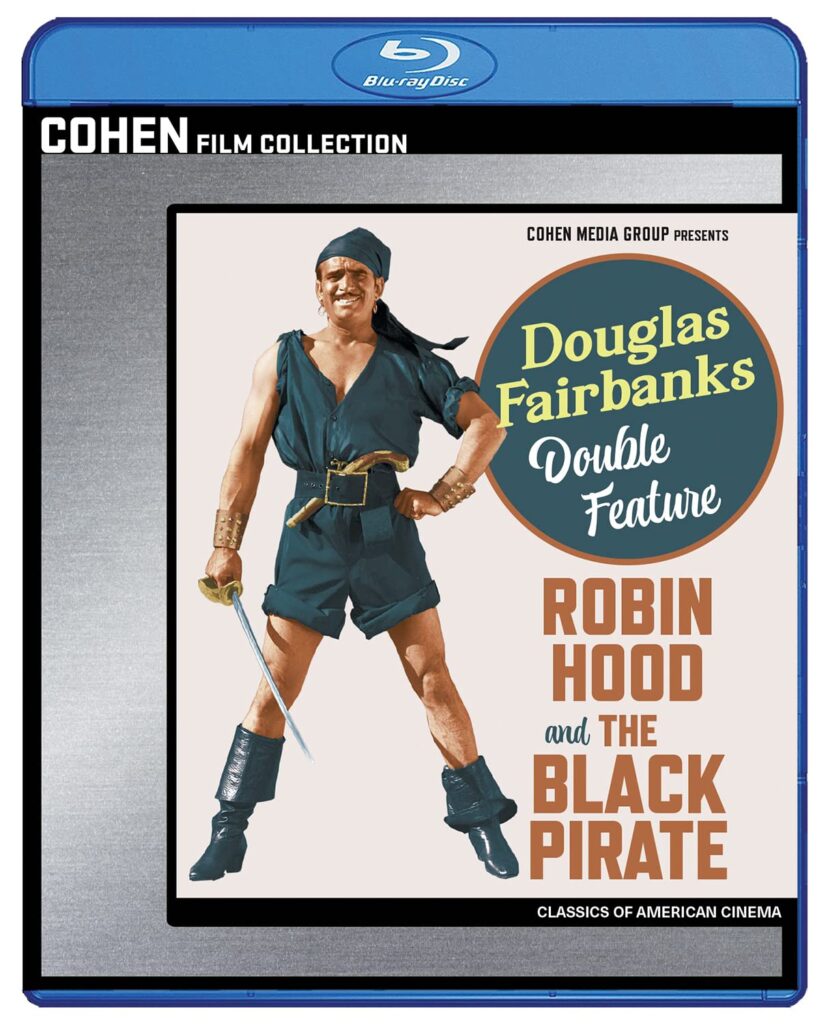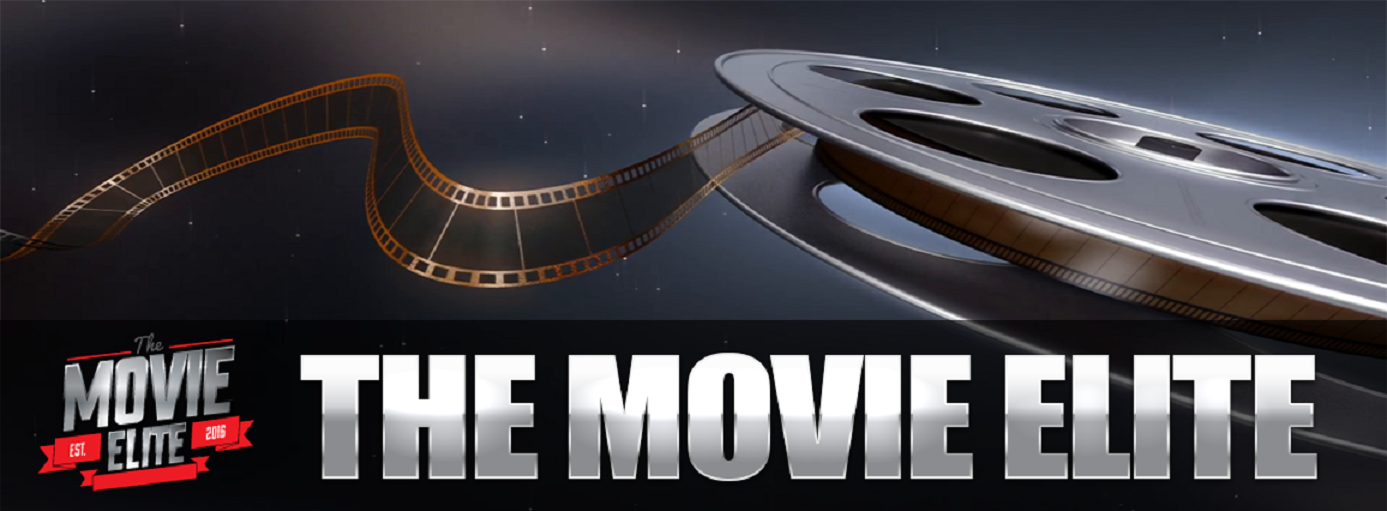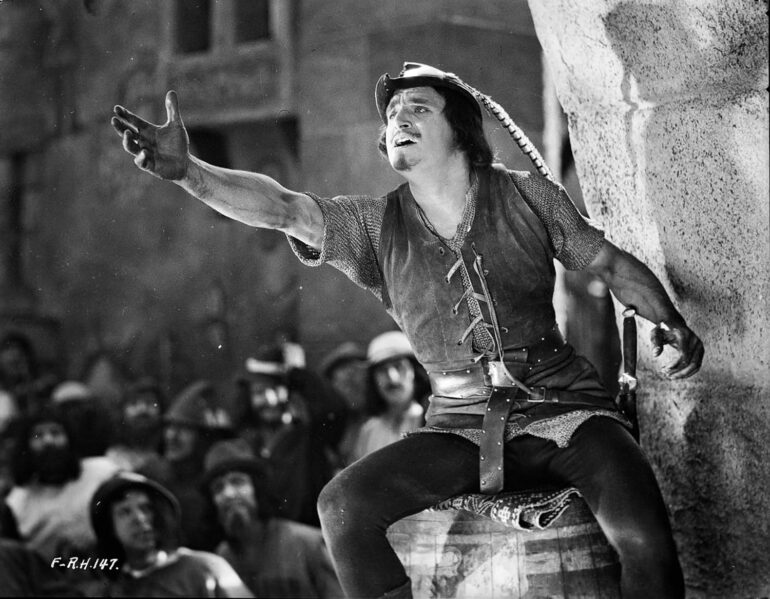Verdict
Summary
An outstanding double bill of two silent adventures, starring the greatest swashbuckler of the silent film era.
Robin Hood Plot:
After returning from the Crusades, an Earl becomes an outlaw.
Review:
A popular and beloved Earl, and friend to King Richard, accompanies the king and his legions to Palestine for the Crusades, but his mind and heart are back home where he left behind a maid named Marian whom he was just beginning to care about. The Earl is a valiant man named Huntingdon (Douglas Fairbanks), and when he is granted permission to return to England, he finds the kingdom in complete disarray and under the rule of the conniving Prince John (Sam De Grasse) who has taken to taxing the poor to extreme degrees, with his evil sheriff (William Lowery) and cousin Guy of Gisbourne (Paul Dickey) enforcing the unfair laws that have the lower classes becoming paupers and outlaws when game becomes scarce and illegal to hunt. Huntingdon – already despised by John before he left – becomes an outlaw himself, the dashing Robin Hood, whose brazen thievery and generosity with the outlaws who’ve congregated in Sherwood forest, garner him a legendary status across England, especially with how he taunts the sheriff and his men. Winning the heart of Marian (Enid Bennett), whom Prince John wants for himself, only exacerbates the animosity John has for him. Robin and his scores of merry men become proactive in their methods to steal from the royals to serve their own ends until Richard returns.
With a nearly one million-dollar budget, the silent Robin Hood – with the original swashbuckler Douglas Fairbanks – is awe-inspiring with its behemoth castle sets and scores of extras with period-appropriate costumes. Right from the start, the movie impresses with its realistic approach, but its biggest deficit is that it takes far too long to become exciting. It’s very long at 133 minutes, and it takes at least an hour before Fairbanks starts jumping around the castle, swinging down from great heights, and shooting the bow and arrow, but it’s worth it to simply behold the majesty of the incredible sets and the massive amounts of extras on screen. Not the definitive version of the lore by any stretch, but certainly of interest to fans of the filmed versions, this Robin Hood is impressive, but not entirely essential. Alan Hale, who plays Little John, would play him twice more in 1938’s The Adventures of Robin Hood and 1950’s Rogues of Sherwood Forest. Directed by Allan Dwan.
The Black Pirate (1926) Plot:
A nobleman takes over a pirate ship and wins them all over as their leader.
Review:
A punch of cutthroat pirates kill everyone on a ship they ransack, except for a nobleman – the Duke of Renoldo (Douglas Fairbanks) – and his elderly father who escape and wash ashore on a small island. The elder Duke dies, and his son swears vengeance. The pirates eventually end up on the island where they bury their booty, and the Duke challenges the pirate leader to a sword fight … and much to everyone’s shock, the Duke is victorious. The pirate leader’s lieutenant (Sam De Grasse) is jealous that his position has been challenged, but the entire crew is won over by the Duke who takes on a new moniker: The Black Pirate! When the crew kidnaps the governor’s daughter, a princess (played by Billie Dove), the whole crew will likely rape her and murder her if it wasn’t for the Duke’s careful planning to ransom her instead, which means that no one can touch her. His gesture enrages the second in command, who tries to turn the crew against him, but it also ends up winning the heart of the princess in the process. When the second in command stages a mutiny, the crew is divided, setting the stage for a grand finale where The Black Pirate will prove his leadership and win the day!
Very convincing as a grand pirate adventure with great looking extras, impressive sword fights, exploding ships, and all the trappings you’d expect from a good pirate film, including a very appealing hero, played by Fairbanks, whose acrobatic feats are pretty impressive. He practically flies around with swishing through the air on ropes to the mainmast, and he cuts sails with knives on the way back down. This certainly was a template for lots of pirate films, all the way down the line to Cutthroat Island and the Pirates of the Caribbean franchise, but without supernatural elements. It’s fun, and deserves a look. Filmed in two-strip Technicolor, so it’s also very attractive to look at for a silent film. From director Albert Parker.
This double feature Blu-ray release from Kino Lorber includes a new audio commentary, 18 minutes of outtakes for The Black Pirate, with commentary, and 29 minutes of additional outtakes for The Black Pirate.



